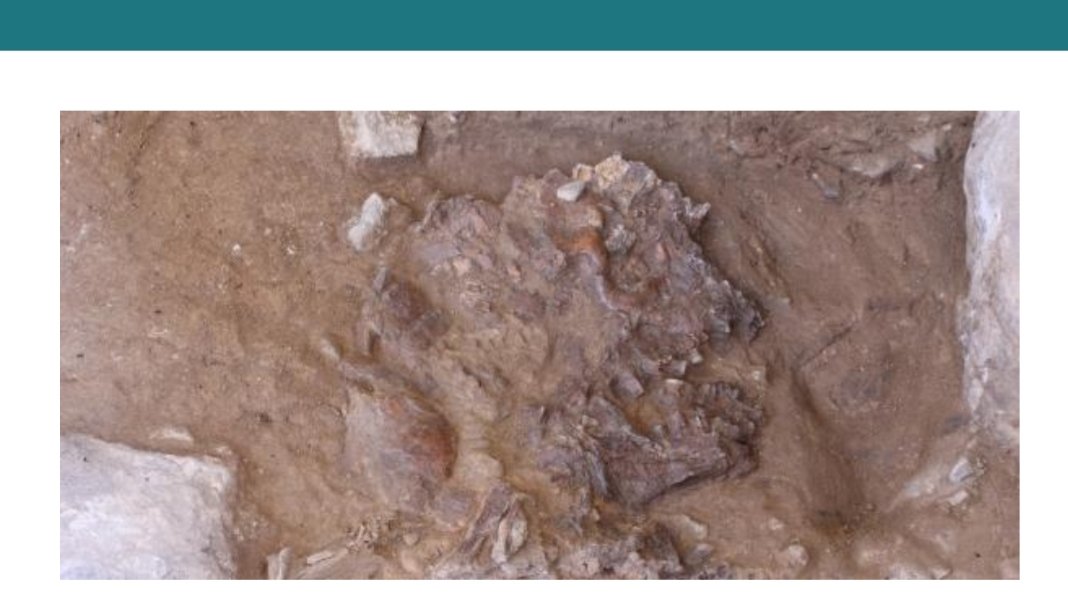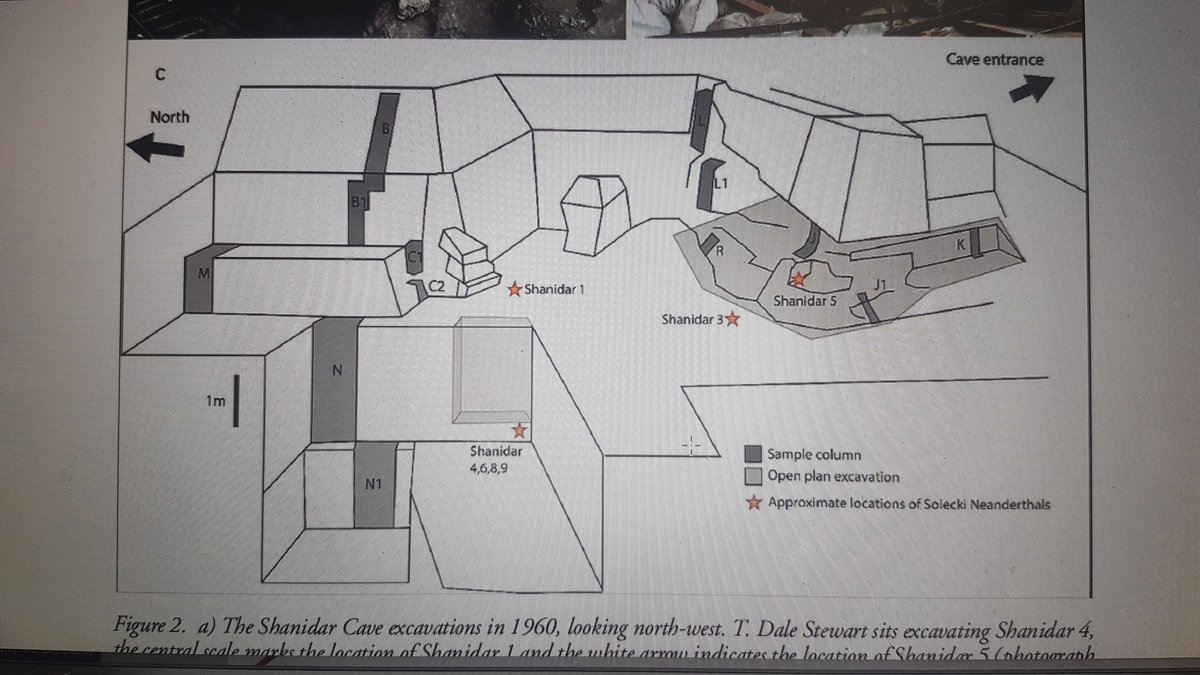1st new #Neanderthal skeleton in +20 years
This is BIG stuff: plenty of bits & pieces found in that time plus vital re-examination of old claimed burials, but what's been missing is a new mostly-complete find we can use 21stC methods on
[off to read paper]

But note: Shanidar is a tricky site and there's long been evidence of both potential intentional body deposits, AND natural rockfall as ways #Neanderthal bodies got into the ground.
Key Qs: what body parts, positioning and context they're in: is it a pit, a natural feature, or under rocks on then-cave floor?
But in 2017 2m deeper cleaning section where 60s sediment block had been removed found bones sticking out (actually recognised by original dig team when they cut the block, but left).
Within a "curved-base scoop/depression... overlain by two large rocks".
So far, so intriguing. Obviously we need to know what's the scoop, and how did rocks get there?

cambridge.org/core/journals/…
(😍 comparing old and new excavation photos)
This adds another important datapoint to quite a few older #Neanderthals, making the idea that they were largely dying young even less well-supported.
A lot of the right arm was missing but it looks like it was bent across the chest.
Left arm was very tightly bent up with wrist flexed down, and beneath the skull.
They found clear evidence deposits around body weren't same as beneath, and say there's a clean 'cut' at base. Natural or not unclear.
ID analysis ongoing but even if this is no rotted funeral bouquet, it could add to plant use evidence.
Team think no evidence of natural rockfall death, even if bones crushed. So that leaves a body in a scoop-out from cave floor.
Even if there wasn't a dug burial pit and the stone by head is random, it's hard to see a natural explanation here. Colleagues may disagree 😉
But however it turns out, welcome back to the world, Shanidar Z!














